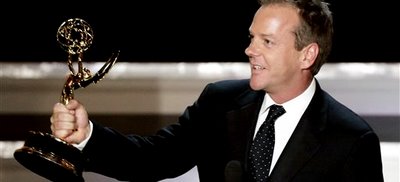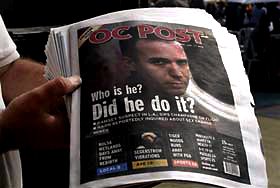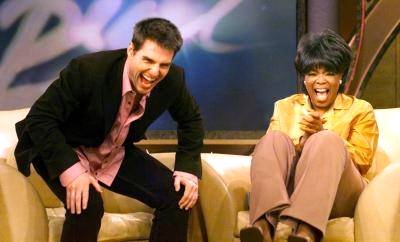
Gene Splicing. Fifty years after their birth into show business families – one famous, one a footnote – two writer-actors have cherry-picked their pasts for one-woman shows about the performance gene. In Jodi Long’s celebratory Surfing DNA at East West Players, she dives into her genetic pool and backstrokes upstream among Chinese, Japanese, Australian, American and Scottish ancestors. In Carrie Fisher’s comic Wishful Drinking, her famous family album becomes an open tabloid in which she jokes about “having my DNA fumigated.”
Ms. Fisher’s entertaining show – a kind of pot-shot-spraying drive-by of herself, her father (crooner Eddie Fisher) and her mother (movie star Debbie Reynolds) – is filled with such neatly phrased jabs. But it’s a stretch to call it theater. Especially compared to Ms. Long’s carefully shaped evening of filial showbiz piety. Beyond the common age, sex and coincidental L.A. premieres, the women have vastly different stories and present them in vastly different ways. While Ms. Fisher provides scandal sheet fodder to remind the audience her parents (and she) are just people, Ms. Long works to get her people into a spotlight that makes them memorable. And where Ms. Fisher seems uncomfortable on stage, delivering her stories as she paces the apron like a shooting gallery target, Ms. Long owns her stage and uses it to perform the role of her lifetime.
Growing up at opposite ends of the country, these women share only one cultural reference point: Gene Kelly. Kelly co-starred with Fisher’s mother in Singin’ in the Rain, her most famous role, but fired Ms. Long’s feisty father Lawrence from his staging of the Broadway premiere of Rodgers and Hammerstein's Flower Drum Song. (Although he would later tour and direct productions of the show, his name does not appear on IBDB's Opening Night credits and, according to Ms. Long, he was blackballed from the first national tour and the 1961 film.)
That near miss does not seem to have hurt Ms. Long's stage, television and film career, however. It just adds to the awe and empathy with which she presents her parents’ story. Especially given the limitations they endured based on discrimination, which persist but were clearly worse a generation ago. This helps contextualize the bittersweet experience of her own Broadway debut at age 8, which was somewhat dampened coming so soon after her father’s close call with Kelly. But the same musical provides dramaturgical arc, as the family shared the pride when Ms. Long returned to Broadway in 2002 as Madame Liang in David Henry Hwang’s re-working of Flower Drum Song. “Grand Avenue,” her big number from that show, opens Surfing and she delivers it – “sells it” as we say – with a grin wide enough to span the song’s two-generation significance.
Her Chinese-Australian father and Japanese-American mother, Kimiye Tsunemitsu, met, married, and raised a daughter while working the ‘Chop Suey’ circuit in San Francisco and New York. They were talented dancers, singers and comics. They worked up a Vaudeville style act that outlived Vaudeville in nightclubs. It was a hard life of rejection and low earnings. But every performance day ended on stage, with those big smiles helping to convince their audience better times were ahead.
Like her parents, Ms. Long embodies this tradition. But she wants to leave us with more than comic and soft-shoe patter. She takes us behind the scenes and behind the smiles. Her parents were like the countless chorus girls, sidemen and understudies who fill the stage beyond the spotlight, quietly reshaping their dreams to fit their achievements. On behalf of them all, Ms. Long has gathered her own variegated roots into a presentable bouquet, and sent it floating downstream to their descendants.
Surfing DNA closed at East West Players’ David Henry Hwang Theatre on November 19. Wishful Drinking is packing houses in an extended run at the Geffen, with a specially enhanced ticket price of $103.
A review of Wishful Drinking is available here. http://www.theatrealtor.com/specialassessments.html
Photo. Jodi Long, left, and Carrie Fisher flank a helix-climbing Gene Kelly.








